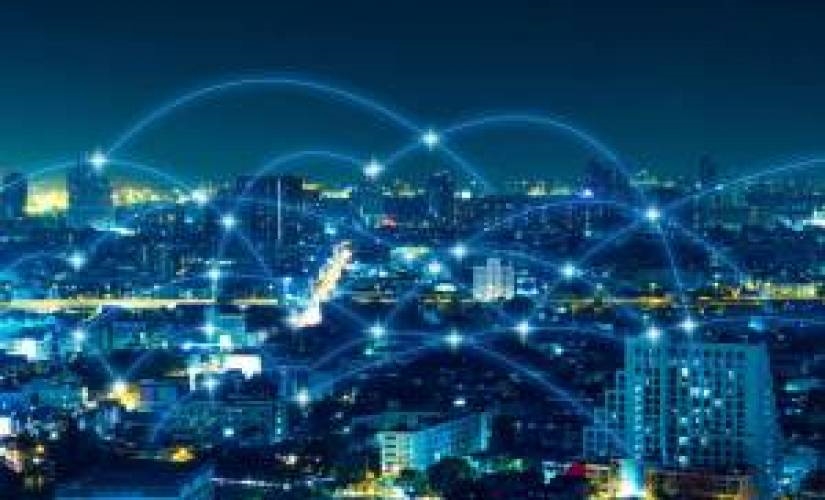Internet of Things (IoT) to Become More Deeply Embedded in 2019
Internet of Things (IoT) to Become More Deeply Embedded in 2019

This year the Internet of Things (IoT) solution will profoundly get secured in our everyday lives at home as well as work. The term IoT itself used less frequently due to it’s moving out of the hype phase and quickly becoming an essential part of our life. The invention of this technology will change our style of living and work as it can get connected with any devices that we own. The Internet of Things (IoT) will become deeply embedded in 2019.
For instance, IoT connects now, and will continue to connect all watches, cars, doors, and more can go online and communicate with each other. When it comes to organizations, tools and machinery are more intelligent and connected, generating data that drives efficiency, enabling new paradigms such as predictive maintenance to become a reality, rather than a pipe-dream.
According to the market research analyst, there will be 26 billion connected devices across the globe by the end of 2019.
Let us have a look at the prognostications as to how likely it will play out over the next coming months. As we frequently become used to the fact that the internet is not just something we connect to computers and smartphones, it is virtually anything that we can imagine.
Devices become more modulated.
The world has gone much advanced when it comes to technology. From smartphones to smart home devices like Alexa hub, or Siri, we are getting used to using the voices to control these devices. However, 2019 will be the year that the rest of our possessions find their voice. Practically speaking, every car manufacturer is working towards virtual assistants for conveniently operating vehicles while behind the wheel and assisting driver’s safety. Moreover, voice control will increasingly become an option for industrial and enterprise technology.
In many ways, voice control makes sense as it is easy to operate requiring no manual input — and our eyes need not be open to watch for jeopardies.
It also represents further removal of the communication restrictions between individuals and devices. Before user interfaces, graphical environments, and dashboards commenced came into existence, and we entirely relied on programming them with computer code — lessening the obstacles to entry. However, voice recognition and generation is the next logical step towards the making of technology that anyone can use to work more efficiently or enhance their lives.
IoT development and deployment will frequently drive by Artificial Intelligence (AI).
Artificial intelligence (AI) and IoT are almost allied areas of technology. As the technology internet of things generates an enormous amount of data, it proves to be useful and compelling to every organization as well as in human’s life. For instance, an industrial network having several devices talking to each other analyses mounds of data created is beyond the powers of humans.
The primary task of AI within the Internet of Things environment is that the training machine learning algorithms to detect outliers in the data.
This detection will indicate opportunities for efficiency or provide early warning of an imminent problem. Moreover, the networks of IoT grows in size and complexity, making them more self-reliant on new developments in Artificial Intelligence (AI) and Machine Learning (ML). Further, through automated threat detection systems, AI plays a vital role in keeping IoT systems secure.
Industries implementing IoT Deployments in 2019.
The technology – Internet of Things not only plays a vital role in human life but also offers considerable benefits to businesses. For instance, emitting information about products on display from mannequins that communicates with customers’ smartphones in retail environments.
According to the research study by Forrester, in 2019, businesses will lead the surge in IoT adoption with 85% of organizations implementing or planning IoT deployments this year.
Manufacturing industries proves to be a clear leader when it comes to the Internet of Things deployment. Looking into the research study, businesses throughout 2019 will flourish the value in connected machinery capable of communicating every detail of its operating parameters and efficiency to other smart, connected devices. Whether or not these solutions are useful, it will start to trickle down to smaller organized bodies, who are confident that their investments will pay off.
Edge Computing.
Algorithms that bounded at the ‘edges’ of a network refers to edge computing customarily at the point where the system touches the real world, like inside sensors and cameras. Given the fact, a considerable amount of data collected by these devices will be counterproductive
A good illustration 0f edge computing is the security camera. It transfers terabytes of video data to the cloud or a central server. However, the only data of any interest will be the few megabytes showing arousing suspicion or illicit activities.
With devices being capable of carrying out their computation and not just dumbing down the information on to the processed in the cloud, networks then become less clogged with traffic. As a result, there is more computing power available for critical tasks.
5G Networks.
The technology internet of things is reliant on speed and availability of data services. 2019 will see the switching-on of first consumer-ready 5G networks, that could operate to 20 times faster than current systems of mobile data. Talking about smart connected technology, some locations are effectively obscure in this period. Moreover, the scope of IoT projects can broaden dramatically with faster and stable mobile networks connected to homes and offices.
Ideas such as the smart city, where civic amenities are networked, and data are analyzed to create cleaner, more efficient urban living environments become more viable. The technology used by self-driving, autonomous cars, and public transport vehicles will also greatly benefit from the increased bandwidth available.
The post Internet of Things (IoT) to Become More Deeply Embedded in 2019 appeared first on ReadWrite.
(8)


